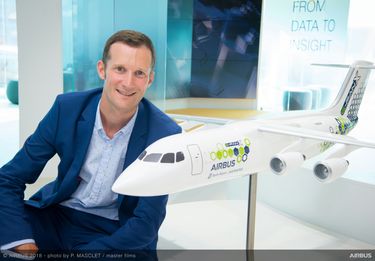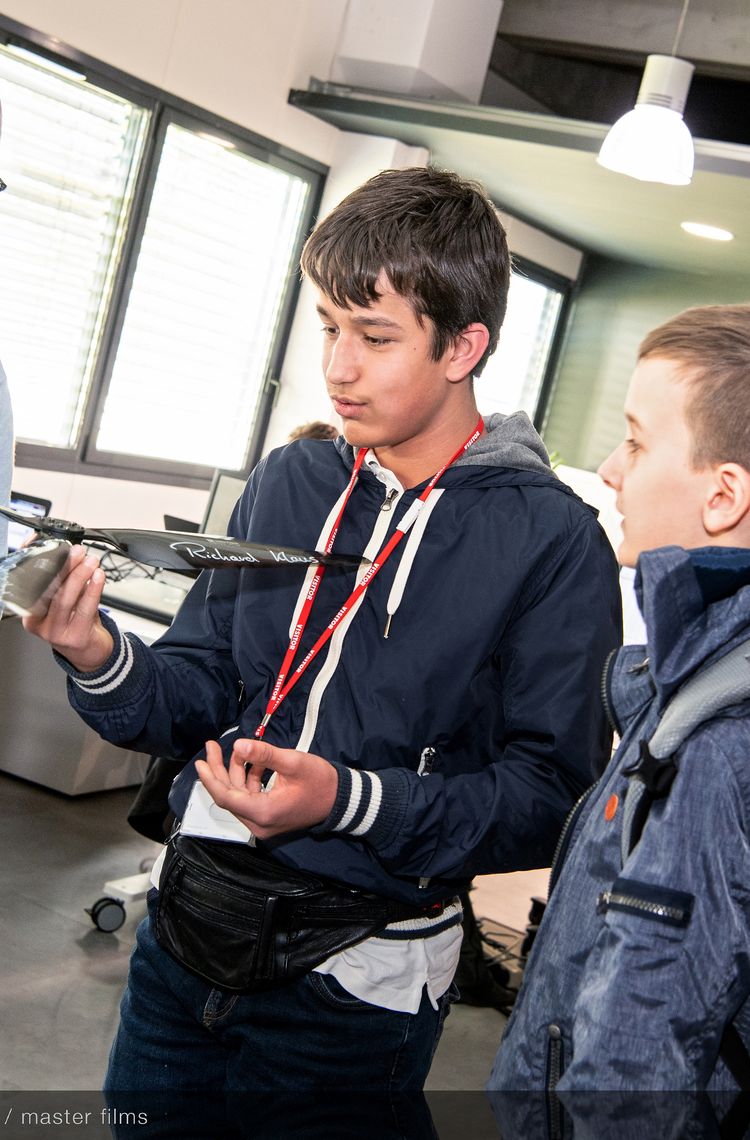Elias Alaoui, 13, and Mark Gallmann, 12, are like most of the seventh-graders at Kantonsschule Zürcher Unterland school in Bülach, Switzerland. Except for one small detail: they just produced a written proposal detailing their concept for an electric-powered commercial aircraft.
Elias and Mark are the engineers of the future. To continue tackling the challenges of aviation, today as tomorrow, we need motivated young people on board, so it’s fundamental that we engage the younger generation.
Grazia Vittadini, Airbus CTO
Encouraged by their parents and teacher, Elias and Mark sent the written proposal to Airbus, where it fell into the hands of Grazia Vittadini, Airbus Chief Technology Officer. Their ideas impressed Grazia so much that the two seventh-graders were invited to the Airbus head office in Toulouse to discuss the concept and their passion for aviation.
“Elias and Mark are the engineers of the future,” Grazia says. “To continue tackling the challenges of aviation, today as tomorrow, we need motivated young people on board, so it’s fundamental that we engage the younger generation.”
The two-day visit included a tour of Airbus’ Research & Technology (R&T) campus, including the DISCO (disruptive cockpit) and ExO demonstrators, as well as a visit to the Airbus Defence & Space site, including the OneWeb assembly line. A two-hour visit to the A380 final assembly line was also a major highlight.
When asked what he likes most about aircraft, Elias simply grins and says: “Everything.”
A new look at future aircraft design
Elias and Mark’s aircraft concept lays out the technical specifications for an electric-powered version of a long-haul wide-body aircraft. In their written proposal, Elias and Mark detailed their view on all aspects of aircraft design, from safety features to electric-propulsion and energy-transmission technologies.
“The thought process involved in their proposal is impressive for two middle-school students,” Grazia explains. “They focus mainly on safety, connectivity and zero-emission flight, so the priorities are definitively the right ones!”
In fact, the “self-deploying landing system” they described in their proposal is strikingly similar to a technology on which Airbus teams are currently working. It is a technology that Airbus aims to deploy in the near future.
Airbus Regional Products Development Manager Philippe Mattei, who works on overall aircraft design and performance, met with Elias and Mark. Like Grazia, Philippe was impressed with the detail and insight provided in their proposal.
“We get technical aircraft design proposals from university students from time to time, but never from two middle-school-aged kids,” Philippe laughs. “It’s impressive that they were able to cover all aspects of aircraft design…and had a vision for future electric-powered aircraft!”
A vision of zero-emission air travel
Electric-propulsion technology is a central aspect of Elias and Mark’s proposal—a feature that attracted Airbus’ attention immediately. Electrification of flight is a key research area on which Airbus has been working since 2010. Key achievements include the development of two electric vertical take-off and landing (eVTOL) demonstrator vehicles, Vahana and CityAirbus, and a hybrid-electric aircraft demonstrator, E-Fan X. The goal of these projects is to help the aviation industry develop the technologies needed to meet the goals in Flightpath’s 2050 Vision for Aviation, which includes reducing CO2 by 75%, NOx by 90% and noise by 65%.
But for Elias and Mark, there was one question they wanted answered most of all: was their concept of electric flight actually feasible?
According to Philippe, the two are definitely on the right track:
“Their idea of energy transmission is very interesting, and something Airbus is considering for the future,” he says. “But in aircraft design, we still need a breakthrough in battery technology to make electric-powered aircraft fly.”
In the future, Elias hopes to become a test pilot and engineer. And Mark aims to become an aeronautics engineer.
Based on the quality of their aircraft proposal, there is no doubt they are already well on their way to getting there.

